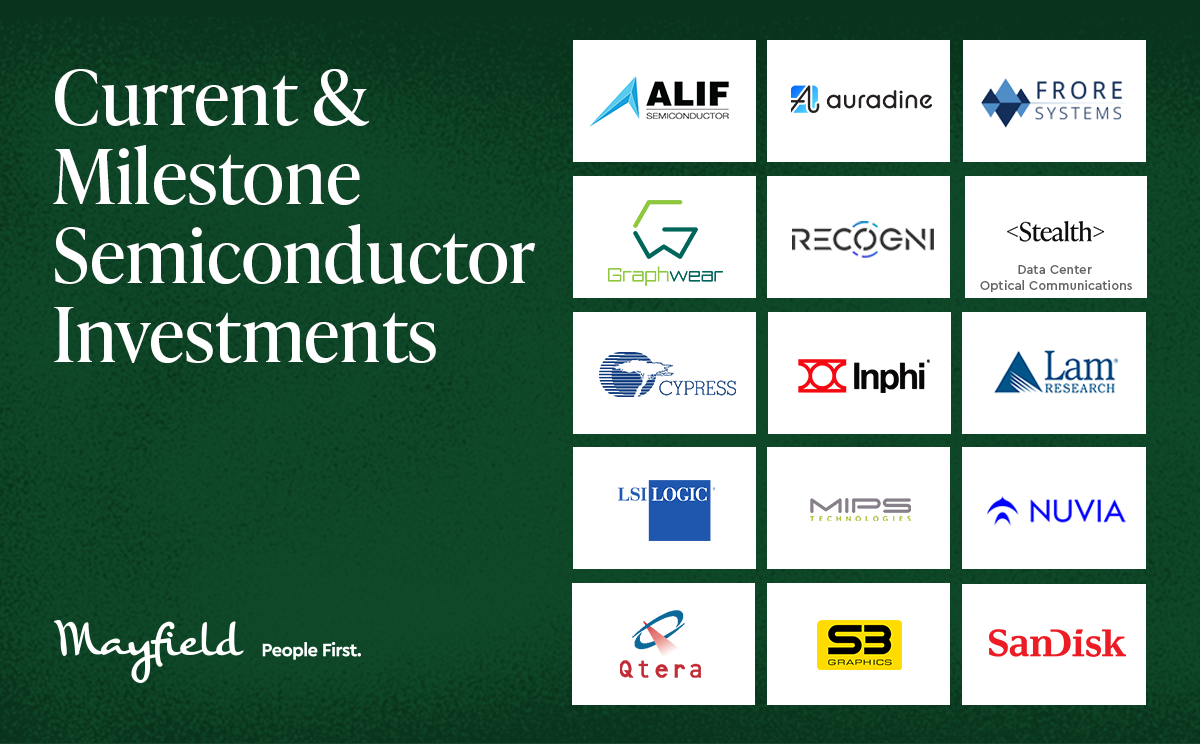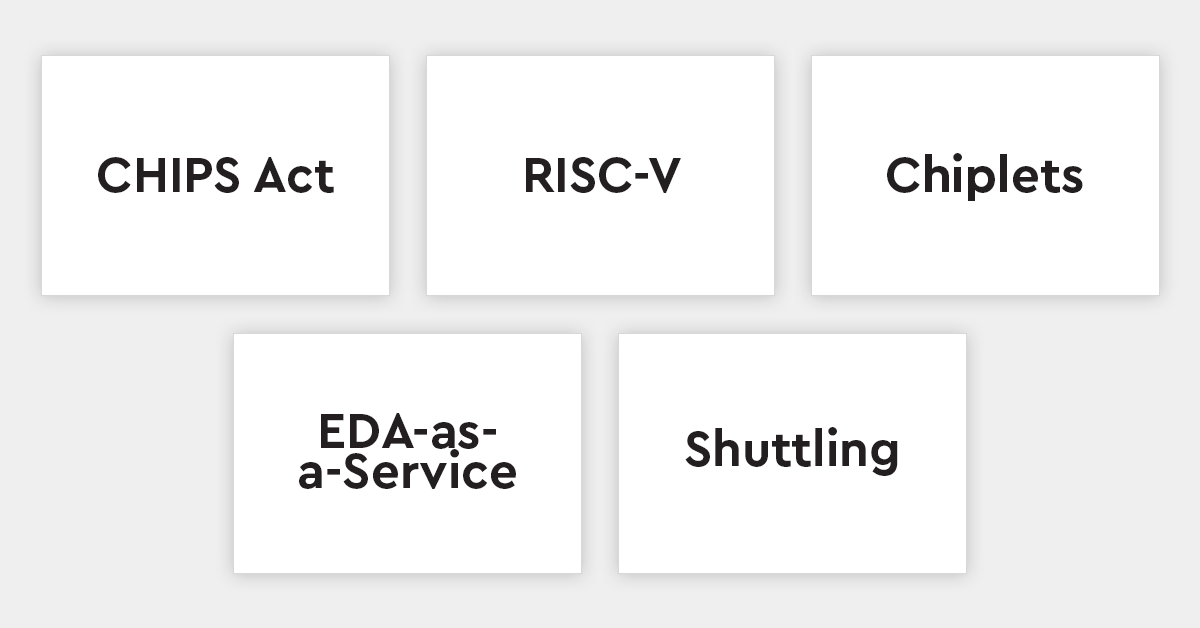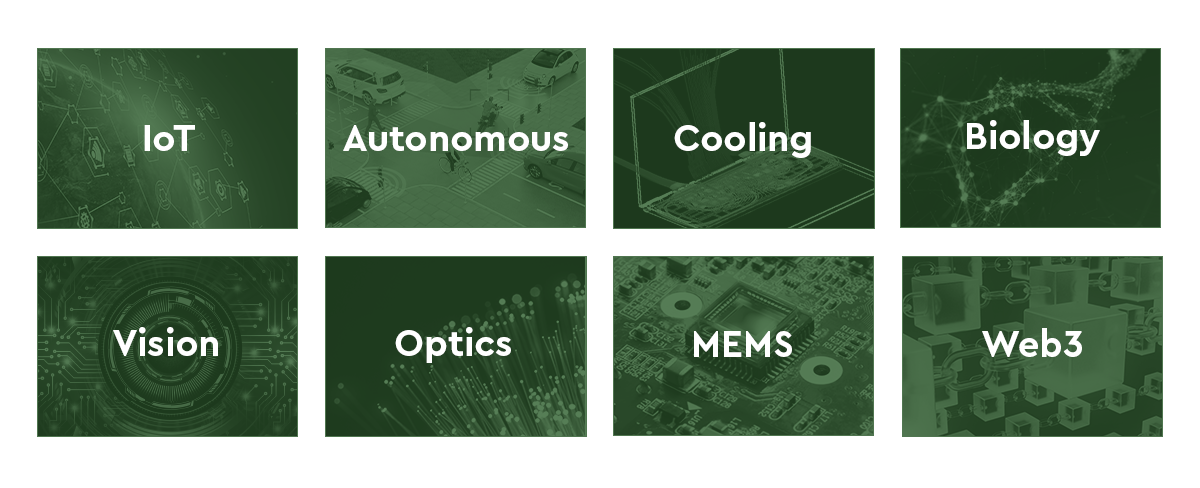As a venture capital firm with a 50+ year history of investing, we have witnessed many technology inflection points. Iconic semiconductor companies, which gave Silicon Valley its name, grew by taking advantage of Moore’s Law, doubling processing speeds every 24 months by packing more transistors on chips. About five years ago we, along with others, observed a plateauing of Moore’s Law, giving rise to a need for architectural innovation & workload-optimized silicon. I shared how the Renaissance of Silicon would create new industry giants, and wrote about opportunities for startups.

In 2023 the golden age for semiconductor innovation continues, enabling the rise of startups to serve emerging market needs. This is driven by governmental policy and four industry shifts.

CHIPS Act: The recently signed CHIPS Act, through which the government will provide incentives for companies to manufacture semiconductors within the US, is a major development. These incentives extend to the supply chain and companies operating in mature nodes. In addition, there are R&D provisions that intend to improve access to prototyping which can encourage startups that need to leverage fab process changes to innovate. There are also expectations for a $500M fund for chip startups.
RISC-V: We have seen the increasing momentum of the RISC-V movement, an open source architecture which has the potential to create exponential opportunities, similar to how Linux impacted software. Startups who are freed from using the closed X86 system or paying the prohibitive licensing fees imposed by ARM, are inventing new processors for new applications.
Chiplets: The emergence of chiplets – tiny integrated circuits that contain a well-defined subset of functionality and which can be implemented in a mix-and-match “LEGO-like” assembly – is another trend powering innovation.
EDA-as-a-Service: Cloudification has come to semis with the emergence of EDA-as-a-service, providing vendors access to design tools in a pay-per-use model.
Shuttling: And the prevalence of *shuttling* – the ability to utilize partial capacity in fabs – similar to renting space in shipping containers, has greatly reduced the cost of getting to the tape out stage.
Eight market opportunities will benefit from the availability of specialized silicon:

- IoT – The 100 billion devices that are touching all aspects of our lives – smart thermostats, doorbells and more – need to have intelligent processors with cellular internet connectivity.
- Autonomous – This is a complicated problem, as self-driving and ADAS (advanced driver assistance systems), are augmenting humans for the first time. A car is bigger than a data center with hundreds of interconnects. There has to be breakthrough processing at the edge, through inference chips as an example, as a bandwidth heavy solution like sending data back into the cloud for AI processing will not work.
- Cooling – Climate change is coming to data centers which are already moving to liquid emergent cooling, but that is not enough. Phones have 10x the power of desktops 10 years ago—when they overheat, they have to throttle the CPU, leading to poor performance. Miniature devices struggle to fit fans. There will be a new wave of solid state cooling startups addressing this need.
- Biology – Breakthrough health devices such as next generation sequencers, needle-free glucose monitoring sensors, new diagnostics systems and the like are creating the need for new kinds of special purpose chips.
- Vision – Most devices now have eyes (phones, doorbells, cars) and as their resolution goes higher, we need their processing power to catch up.
- Optics – Copper wires have limited capacity leading to the need for optical interconnects to handle 400-800 gigabits/second. What used to happen in telecom with undersea fiber will now happen in commercial offices and data centers for connectivity.
- MEMS – There will be a lot of new innovation in sensors for various applications.
- Web3 – Similar to how Cisco, Sun Microsystems, Palo Alto Networks or Juniper Networks served as the gateway to the Internet in Web 1.0, we believe that new equipment giants for Web3 will be created.
The semiconductor industry has a 70+ year history of innovating at inflection points to create new categories of products and maintain the US competitive advantage. I believe we are at another such inflection point, one in which governmental support and the driving force of new markets are coinciding to help entrepreneurs put silicon back into Silicon Valley.


